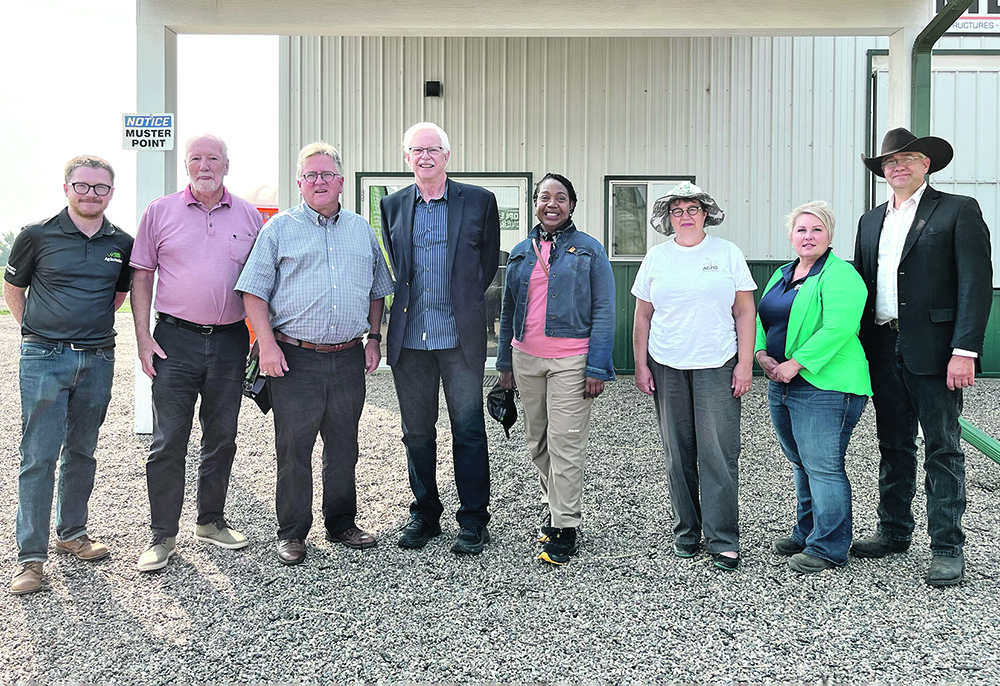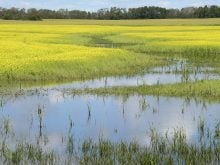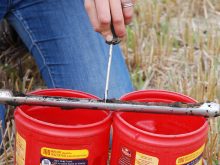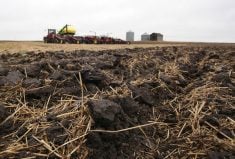Study aims to provide a baseline of soil health in Canada and inform future policies that will protect soil as a vital resource
The Senate agriculture committee took a field trip to Western Canada last month to learn more about the soil it has been studying for a year.
The standing committee stopped at the Discovery Farm at Langham, Sask., and spent time with academics and students from the University of Saskatchewan’s agriculture college, before moving on to Alberta where members visited Olds College and farms.
Senator Rob Black chairs the committee. He said it is important for members to hear from people on the ground. More than 60 witnesses have already given testimony at committee meetings since they began last fall. Earlier this year, the senators visited Guelph, Ont.
Read Also

Trump’s tariffs take their toll on U.S. producers
U.S. farmers say Trump’s tariffs have been devastating for growers in that country.
“We saw some things that corroborated what we heard in testimony,” he said after the western trip. “We better understand that a one-size-fits-all approach doesn’t work for soil health and soil program initiatives, as some might think.”
Black said members saw technology already in practice and some in development. They saw irrigated soils and dryland farming.
“We had never seen the permanent grasslands of the hills in southern Alberta,” he said, adding he was amazed at the dry silt in which farmers can produce crops.
“We were also at a farm that is using regenerative agriculture. We hear about these things but this is our chance to see it in action.”
The committee intends to produce a report next year once its testimony and fact-finding is complete. Some members also attended the Global Soil Partnership Plenary Assembly, hosted by the Food and Agriculture Organization in Rome.
Black said analysts from the parliamentary library and the committee clerk are involved in the work as well and will help to write the report.
Key themes emerging so far, according to the committee, include the importance of soil as the basis of food, farming practices are creating healthier soil, soil health and climate change are linked, and indigenous agriculture offers a unique approach.
The committee also said that soil must be protected as a vital resource and a study on it is long overdue. The last major senate study was completed in 1984 when Saskatchewan senator Herb Sparrow chaired the committee and it produced Soil At Risk, Canada’s Eroding Future.
Getting a baseline of soil health now is critical to programs and policies in the future.
Black said he hoped the federal report will resonate with everybody.
“I don’t want to presuppose (what the report will contain) but I would expect somewhere in that report it will say one-size-fits-all doesn’t work,” he said.
In earlier testimony, committee members expressed concern that producers who adopted certain conservation practices, such as no-till farming, would not be compensated for their decades of carbon sequestration.
Black said they heard that again during their trip and will keep it in mind.
“Ours are recommendations to the government,” he said. “We don’t have programs and dollars for the Senate to make programs. We can only just identify what they should think about when they’re developing those programs.”
















